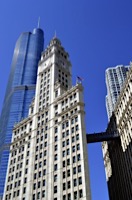
LET the rest of the country worry about a double-dip recession. Tech land, stretching from San Jose to San Francisco, is in a time warp, and times here are still flush.
Even now, technology types in their 20s and 30s are dropping a million-plus each on modest ranch houses in Palo Alto in Silicon Valley and Victorian duplexes in San Francisco, and home prices in some parts have jumped nearly 50 percent in the last six months.
Jobs — good, six-figure jobs, with perks like free haircuts and lessons on how to create the next start-up company — are here for the taking, at least for software engineers.




















